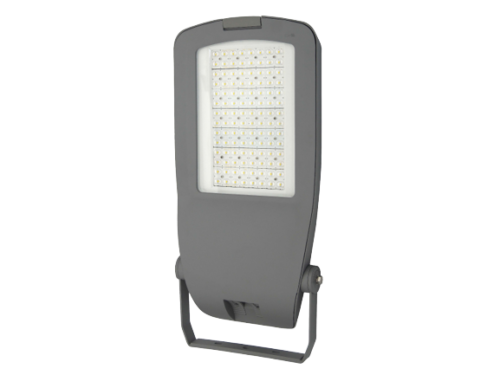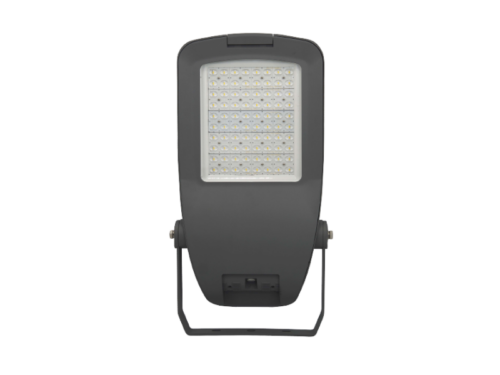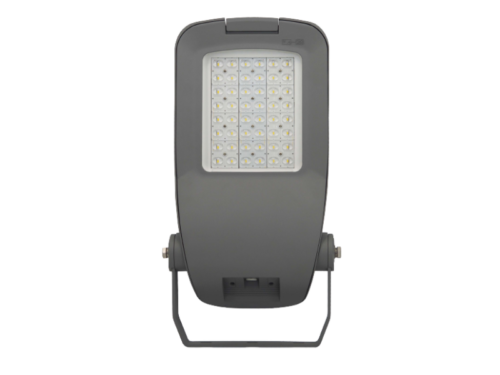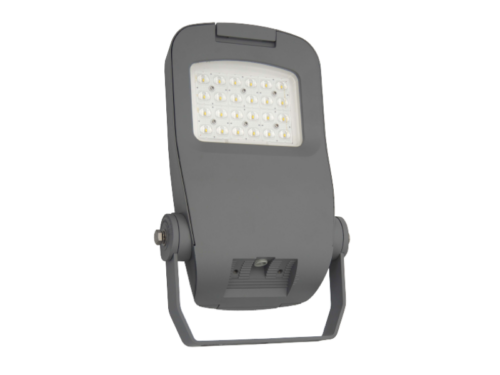Giriş:
Football, a sport that captivates millions around the globe, is not just a daytime affair. The magic of the game often extends into the night. It creates an electrifying atmosphere that adds a new dimension to the spectator and player experience. Football field lights play a pivotal role in ensuring that the action is not just visible under the moonlit skies. But under every weather condition. This guide talks about the key considerations for football field lighting. It thus helps in creating an optimal environment for both players and fans.
Futbol Sahası Aydınlatması İçin Bir Kılavuz
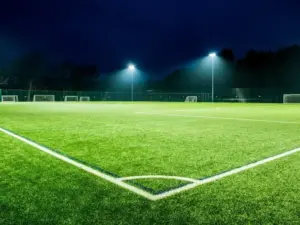
1. Understanding the Importance of Proper Lighting
The significance of proper football field lighting goes beyond mere visibility. It directly influences player performance, fan engagement, and overall safety. Insufficient lighting can lead to compromised player visibility. It increases the risk of injuries and affects the game’s overall quality. Additionally, well-lit fields enhance the viewing experience for spectators. This fosters a sense of excitement and intensity.
2. Compliance with Standards and Regulations
Understanding the relevant standards and regulations is crucial before discussing football field lights. Different governing bodies provide different guidelines on the recommended illuminance levels. They also have measures in place for glare control and uniformity. Compliance ensures not only the safety of players but also the credibility of the event.
3. Determining Lighting Requirements
The lighting requirements for football field light poles are influenced by factors such as the level of play, field size, and the type of event. Professional stadiums hosting major tournaments may have higher lighting standards. Calculating the required illuminance levels and uniformity is essential to meet the venue’s specific needs.
4. Choosing the Right Lighting Fixtures
Selecting the appropriate football field lighting fixtures is critical in achieving optimal visibility. LED lights have become the preferred choice for football field lighting. This is due to their energy efficiency, durability, and controllability. High-quality fixtures with proper optics help distribute light evenly. This happens across the playing surface, minimizing shadows and glare.
5. Placement and Orientation of Fixtures
Proper placement and orientation of football field light fixtures are key factors. They help in achieving uniform illumination. They should include factors like the field layout, spectator areas, and potential obstructions. Additionally, tilting fixtures at the correct angles helps control glare. It ensures that players can perform at their best without being hindered by harsh shadows.
6. Control Systems for Dynamic Lighting
Implementing a dynamic lighting control system for football field light poles allows for flexibility. It helps in adjusting light levels based on different requirements. For example, during pre-game warm-ups, lower light levels may be sufficient. It can save energy without compromising safety. Advanced control systems also enable the creation of lighting scenarios for various events. They help enhance the overall atmosphere and fan experience.
7. Balancing Light Levels Across the Field
Achieving uniformity in lighting levels across the entire playing surface is crucial for fair play and player safety. Advanced football field lighting design considers horizontal and vertical illuminance levels. They help in ensuring that every corner of the field is adequately lit. This requires carefully balancing fixture placement, spacing, and light intensity.
8. Minimizing Glare and Light Pollution
Glare can be a significant concern for players and spectators alike in football field light poles. Properly designed fixtures, with shielding and anti-glare features, help minimize direct glare. They ensure a clear line of sight. Additionally, addressing light pollution concerns is essential, especially in urban areas. Shielding fixtures and directing light help minimize the impact on the surrounding environment.
9. Maintenance and Monitoring
Regular maintenance is essential to ensure the lighting system continues performing at its best. Periodic inspections and testing control systems help identify issues before they impact gameplay. Implementing a remote monitoring system allows for real-time assessment of the lighting performance. It helps produce a quick response to any malfunctions.
10. Energy Efficiency and Sustainability
Energy efficiency and sustainability are key considerations in football field lighting. In addition to providing superior illumination, LED technology is energy-efficient. It has a longer lifespan compared to traditional lighting sources. Implementing smart control systems enhances energy savings. It allows precise control over light levels. It is based on the actual requirements of the field.
11. Considering Surrounding Environment and Community Impact
The impact of football field lights extends beyond the stadium walls. Considering the surrounding environment and its community is essential for responsible lighting design. Collaborating with local authorities and communities helps address concerns related to light spillage. It mitigates any potential negative effects on the ecosystem. Using directional lighting techniques minimizes the impact on the surrounding residential areas.
12. Adapting to Different Weather Conditions
Football is a sport that faces the elements. Lighting systems should be designed to adapt to various weather conditions. Rain, fog, or snow can affect visibility. That is why lighting solutions need to account for these challenges. Implementing weather-aware control systems allows for automatic adjustments to maintain optimal visibility. They can help during adverse weather. This ensures the game can go on even in inclement conditions.
13. Integration with Multimedia and Entertainment Systems
Modern football events are not just about the game but also the overall entertainment experience. Integrating football field lights with multimedia displays enhances the experience of the spectacle. Synchronized light shows during player introductions and goal celebrations are fun. And halftime shows contribute to the overall excitement, creating a memorable experience for fans.
14. Accessibility for Disabled Spectators and Players
Inclusive design is a critical consideration for football field lighting. Ensuring that football field lighting systems accommodate the needs of disabled spectators is vital. This includes providing adequate illumination in areas such as ramps, stairs, and seating. Lighting controls that allow for customization based on individual needs are also important. They further contribute to creating an inclusive and accessible environment for everyone.
15. Collaboration with Lighting Design Professionals
Understanding the basics of football field lights is essential. It comes collaborating with lighting design professionals can take the project to the next level. Lighting designers bring expertise in creating visually appealing and functional lighting solutions. Their knowledge of the latest technologies and best practices can contribute to the success of the project. It ensures that it meets the highest standards of performance and aesthetics.
FAQs – A Guide For Football Field Lighting
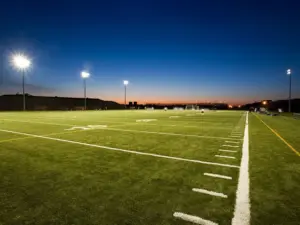
-
What are the key standards and regulations for football field lights?
Football field lighting standards vary, but authorities like FIFA provide guidelines. Some of them are illuminance levels, glare control, and uniformity. Compliance with these standards ensures safety and credibility.
-
Why are LED lights the preferred choice for a football field with lights?
LED lights are preferred for their energy efficiency, durability, and controllability. They provide superior illumination and contribute to energy savings. They have a longer lifespan compared to traditional lighting sources.
-
How is glare controlled in football field lights?
Glare is controlled through the use of properly designed fixtures. It can be done with shielding and anti-glare features. These fixtures minimize direct glare and ensure a clear line of sight for both players and spectators.
-
What role do control systems play in football field lighting?
Control systems allow for dynamic lighting adjustments. They offer flexibility in managing light levels based on different requirements. They also contribute to energy savings. This encourages the creation of customized lighting scenarios for various events.
-
How can a football field with lights adapt to different weather conditions?
Weather-aware control systems enable automatic adjustments to maintain optimal visibility. They can help during adverse weather conditions such as rain, fog, or snow. This ensures that the game can proceed even in challenging weather.
-
What considerations should be made for community impact and environmental responsibility?
Responsible lighting design considers the surrounding environment and community impact. Collaboration with local authorities and the implementation of shielding measures can help. They can mitigate light spillage and minimize the ecological impact.
-
How much do football field lights cost?
Football field lighting costs vary based on factors like field size, lighting technology, and installation requirements. On average, traditional metal halide systems can cost $50,000 to $150,000, while energy-efficient LED solutions range from $150,000 to $500,000 or more. Costs may also include ongoing maintenance and operational expenses.
-
How can football field lights contribute to an inclusive environment?
Inclusive design involves providing adequate illumination for disabled spectators and players. They include areas with ramps, stairs, and seating for those with mobility challenges. Lighting controls that allow customization for individual needs also enhance inclusivity.
-
Why should lighting design professionals be involved in football field lighting projects?
Lighting design professionals bring expertise in creating visually appealing and functional lighting solutions. Their knowledge of the latest technologies and industry best practices helps. They ensure that the lighting project meets the highest standards of performance and aesthetics.
-
How many lumens to light a football field?
The number of lumens required to light a football field depends on factors like field size and lighting standards. A professional football field typically needs around 50,000 to 100,000 lumen per square meter.
Sonuç:
Football field lighting is not just about illuminating a playing surface. It’s about creating an immersive experience for players and fans alike. Every aspect is vital, from compliance with standards to selecting cutting-edge LED fixtures. A football field with lights always plays a crucial role in achieving the perfect balance of visibility, safety, and atmosphere. By following this guide, stakeholders can contribute to the magic of football under the lights. They can ensure the beautiful game shines brightly, even on the darkest nights.
